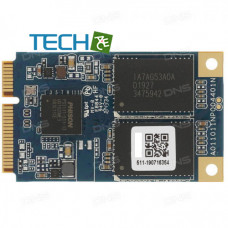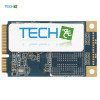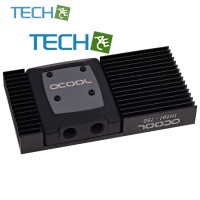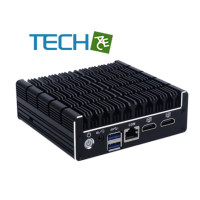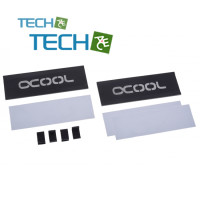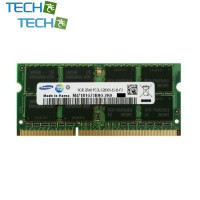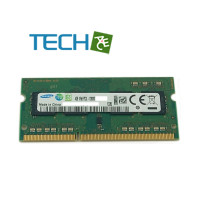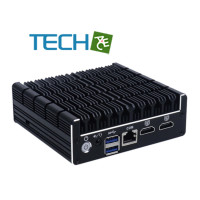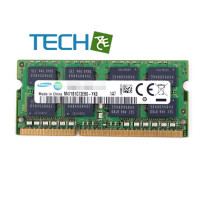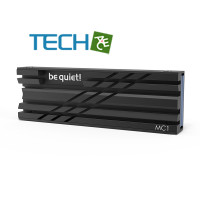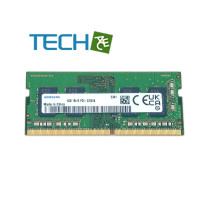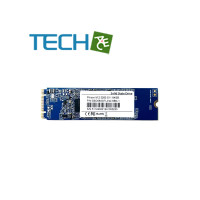1.1.General Description
PS3111 M.2 2242 delivers all the advantages of flash disk technology with the Serial ATA I/II/III Interface and is fully compliant with the standard Next Generation Form Factor (NGFF) called M.2 Card Format, which is generated by Intel. The PS3111 M.2 2242 is designed to operate at a maximum operating frequency of 200MHz with 30MHz external crystal. Its capacity could provide a wide range up to 512GB. The power consumption of the M.2 2242 is much lower than traditional hard drives, making it the best embedded solution for new platforms.
1.4.Flash Management
1.4.1.Error Correction Code (ECC)
Flash memory cells will deteriorate with use, which might generate random bit errors in the stored data.
Thus, PS3111 M.2 2242 applies the LDPC (Low Density Parity Check) of ECC algorithm, which can detect and
correct errors occur during read process, ensure data been read correctly, as well as protect data from
corruption.
1.4.2.Wear Leveling
NAND Flash devices can only undergo a limited number of program/erase cycles, and in most cases, the
flash media are not used evenly. If some areas get updated more frequently than others, the lifetime of the
device would be reduced significantly. Thus, Wear Leveling technique is applied to extend the lifespan of
NAND Flash by evenly distributing write and erase cycles across the media.
Phison provides advanced Wear Leveling algorithm, which can efficiently spread out the flash usage through
the whole flash media area. Moreover, by implementing both dynamic and static Wear Leveling algorithms,
the life expectancy of the NAND Flash is greatly improved.
1.4.Flash Management
1.4.1.Error Correction Code (ECC)
Flash memory cells will deteriorate with use, which might generate random bit errors in the stored data.
Thus, PS3111 M.2 2242 applies the LDPC (Low Density Parity Check) of ECC algorithm, which can detect and
correct errors occur during read process, ensure data been read correctly, as well as protect data from
corruption.
1.4.2.Wear Leveling
NAND Flash devices can only undergo a limited number of program/erase cycles, and in most cases, the
flash media are not used evenly. If some areas get updated more frequently than others, the lifetime of the
device would be reduced significantly. Thus, Wear Leveling technique is applied to extend the lifespan of
NAND Flash by evenly distributing write and erase cycles across the media.
Phison provides advanced Wear Leveling algorithm, which can efficiently spread out the flash usage through
the whole flash media area. Moreover, by implementing both dynamic and static Wear Leveling algorithms,
the life expectancy of the NAND Flash is greatly improved.
3
1.4.3.Bad Block Management
Bad blocks are blocks that include one or more invalid bits, and their reliability is not guaranteed. Blocks
that are identified and marked as bad by the manufacturer are referred to as “Initial Bad Blocks”. Bad blocks
that are developed during the lifespan of the flash are named “Later Bad Blocks”. Phison implements an
efficient bad block management algorithm to detect the factory-produced bad blocks and manages any bad
blocks that appear with use. This practice further prevents data being stored into bad blocks and improves
the data reliability.
1.4.4.TRIM
TRIM is a feature which helps improve the read/write performance and speed of Solid-State Drives (SSD).
Unlike Hard Disk Drives (HDD), SSDs are not able to overwrite existing data, so the available space gradually
becomes smaller with each use. With the TRIM command, the operating system can inform the SSD which
blocks of data are no longer in use and can be removed permanently. Thus, the SSD will perform the erase
action, which prevents unused data from occupying blocks all the time.
1.4.5.SMART
SMART, an acronym for Self-Monitoring, Analysis and Reporting Technology, is an open standard that allows
a hard disk drive to automatically detect its health and report potential failures. When a failure is recorded
by SMART, users can choose to replace the drive to prevent unexpected outage or data loss. Moreover,
SMART can inform users of impending failures while there is still time to perform proactive actions, such as
copy data to another device.
1.4.6.Over-Provision
Over Provisioning refers to the inclusion of extra NAND capacity in a SSD, which is not visible and cannot be
used by users. With Over Provisioning, the performance and IOPS (Input /Output Operations per Second) is
improved by providing the controller additional space to manage P/E cycles, which enhances the reliability
and endurance as well. Moreover, the write amplification of the SSD becomes lower when the controller
writes data to the flash.
4
1.4.7.Firmware Upgrade
Firmware can be considered as a set of instructions on how the device communicates with the host.
Firmware will be upgraded when new features are added, compatibility issues are fixed, or read/write
performance gets improved.
1.5.Low Power Management
1.5.1.DEVSLP Mode (Optional)
With the increasing need of aggressive power/battery life, SATA interfaces include a new feature, Device
Sleep (DEVSLP) mode, which helps further reduce the power consumption of the device. DEVSLP enables
the device to completely power down the device PHY and other sub-systems, making the device reach a
new level of lower power operation. The DEVSLP does not specify the exact power level a device can
achieve in the DEVSLP mode, but the power usage can be dropped down to 5mW or less.
1.5.2.DIPM/HIPM Mode
SATA interfaces contain two low power management states for power saving: Partial and Slumber modes.
For Partial mode, the device has to resume to full operation within 10 microseconds, whereas the device
will spend 10 milliseconds to become fully operational in the Slumber mode. SATA interfaces allow low
power modes to be initiated by Host (HIPM, Host Initiated Power Management) or Device (DIPM, Device
Initiated Power Management). As for HIPM, Partial or Slumber mode can be invoked directly by the
software. For DIPM, the device will send requests to enter Partial or Slumber mode.
1.6.Power Loss Protection: Flushing Mechanism (Optional)
Power Loss Protection is a mechanism to prevent data loss during unexpected power failure. DRAM is a
volatile memory and frequently used as temporary cache or buffer between the controller and the NAND
flash to improve the SSD performance. However, one major concern of the DRAM is that it is not able to
keep data during power failure. Accordingly, the PS3111 applies the GuaranteedFlush technology, which
requests the controller to transfer data to the cache. For PS3111, SDR performs as a cache, and its size is
128MB. Only when the data is fully committed to the NAND flash will the controller send acknowledgement
(ACK) to the host. Such implementation can prevent false-positive performance and the risk of power
cycling issues.
Additionally, it is critical for a controller to shorten the time the in-flight data stays in the cache. Thus,
5
Phison’s PS3111 applies an algorithm to reduce the amount of data resides in the cache to provide a better
performance. This SmartCacheFlush technology allows incoming data to only have a “pit stop” in the cache
and then move to the NAND flash at once. If the flash is jammed due to particular file sizes (such as random
4KB data), the cache will be treated as an “organizer”, consolidating incoming data into groups before
written into the flash to improve write amplification.
In sum, with this Flush Mechanism, PS3111 proves to provide the reliability required by consumer, industrial,
and enterprise-level application.
1.7.Advanced Device Security Features
1.7.1.Secure Erase
Secure Erase is a standard ATA command and will write all “0x00” to fully wipe all the data on hard drives
and SSDs. When this command is issued, the SSD controller will empty its storage blocks and return to its
factory default settings.
1.7.2.Write Protect
When a SSD contains too many bad blocks and data are continuously written in, then the SSD might not be
used anymore. Thus, Write Protect is a mechanism to prevent data from being written in and protect the
accuracy of data that are already stored in the SSD.
1.8.SSD Lifetime Management
1.8.1.Terabytes Written (TBW)
TBW (Terabytes Written) is a measurement of SSDs’ expected lifespan, which represents the amount of
data written to the device. To calculate the TBW of a SSD, the following equation is applied:
TBW = [(NAND Endurance) x (SSD Capacity)] / WAF
NAND Endurance: NAND endurance refers to the P/E (Program/Erase) cycle of a NAND flash.
SSD Capacity: The SSD capacity is the specific capacity in total of a SSD.
WAF: Write Amplification Factor (WAF) is a numerical value representing the ratio between the amount of
data that a SSD controller needs to write and the amount of data that the host’s flash controller
writes. A better WAF, which is near 1, guarantees better endurance and lower frequency of data
written to flash memory.
6
1.8.2.Thermal Monitor (Optional)
Thermal monitors are devices for measuring temperature, and can be found in SSDs in order to issue
warnings when SSDs go beyond a certain temperature. The higher temperature the thermal monitor
detects, the more power the SSD consumes, causing the SSD to get aging quickly. Hence, the processing
speed of a SSD should be under control to prevent temperature from exceeding a certain range. Meanwhile,
the SSD can achieve power savings.
1.9.An Adaptive Approach to Performance Tuning
1.9.1.Throughput
Based on the available space of the disk, PS3111 will regulate the read/write speed and manage the
performance of throughput. When there still remains a lot of space, the firmware will continuously perform
read/write action. There is still no need to implement garbage collection to allocate and release memory,
which will accelerate the read/write processing to improve the performance. Contrarily, when the space is
going to be used up, PS3111 will slow down the read/write processing, and implement garbage collection
to release memory. Hence, read/write performance will become slower.
1.9.2.Predict &Fetch
Normally, when the Host tries to read data from the SSD, the SSD will only perform one read action after
receiving one command. However, PS3111 applies Predict &Fetch to improve the read speed. When the
Host issues sequential read commands to the SSD, the SSD will automatically expect that the following will
also be read commands. Thus, before receiving the next command, flash has already prepared the data.
Accordingly, this accelerates the data processing time, and the host does not need to wait so long to
receive data.
1.9.3.SmartZIP TM
Write data to the NAND Flash costs time. To improve the write speed performance, PS3111 launches with
compression technique-- SmartZIP TM
.
Whether a file could be compressed or not depending on the file type, for file types have redundancy data
pattern, through our embedded encode engine, we could reduce the amount of data that is actually
written to the Flash. Comparing to the SSD without the compression, write efficiency is raised and the SSD
7
endurance is also improved since Flash could be benefit from less data written for a longer SSD lifetime.
- メーカー: Yanling (Phison)
- 容量: 128GB
- タイプ: mSATA SSD
Key Features of PS3111-S11T:
• SATA III/6Gbps backwards compatible to SATA Gen I and II
• 1Znm SLC/pSLC/MLC/TLC and 3D NAND Support
• DRAM and DRAM-Less Support
• 16GB to 1TB Capacity Support
• Supports Error Correction Code with LDPC
• High Performance
- Sequential Read: up to 550 MB/s
- Sequential Write: up to 500 MB/s
- 4K Random Read: up to 91,000 IOPS
- 4K Random Write: up to 86,000 IOPS
• S.M.A.R.T support, with additional Smart Recovery and Workload Analysis Tool
Advanced Technology
• End-to-End Data Path Protection
• SmartECC™ RAID Page Parity Data Protection
• SmartFlush™ Technology for Unexpected Power Loss Protection
• SmartZIP™ Technology for Enhanced Endurance
• Advanced Read Disturb Management with SmartRefresh™ Technology
Additional Industrial Grade Embedded Features:
• Extended Temperature Support from -40°C to 85°C
• SLC and pSLC NAND Support
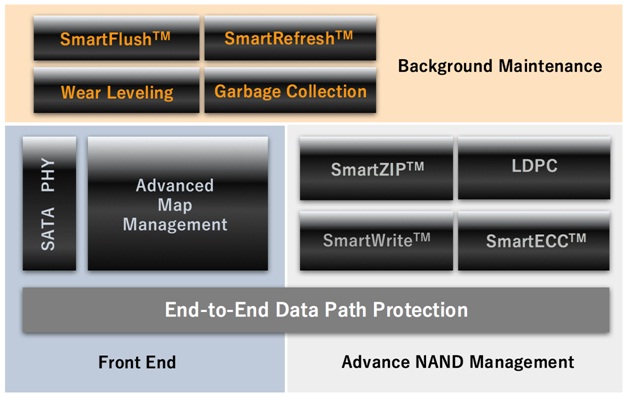
About Phison
Phison Electronics Corp. (TPEX:8299) is a global leader in NAND Flash controller IC and storage solutions. We provide a variety of services from controller design, system integration, IP licensing to total turnkey solutions, covering applications across SSD (PCIe/SATA/PATA), eMMC, UFS, SD and USB interfaces, reaching out to consumer, industrial and enterprise markets. As an active member of industry associations, Phison is on the Board of Directors for SDA, ONFI, UFSA and a contributor for JEDEC, PCI-SIG, MIPI, NVMe and IEEE-SA.
Yanling 128GB mSATA SSD (Phison) PS3111-S11T
- ブランド: PHISON
- 品番:FLSSD128M42CX3
- 在庫:在庫あり
-
¥5,566
- 税別:¥5,060
関連商品
ACool NexXxoS GPX - SSD 750シリーズ - ブラック
メーカー番号: 11298 EAN: 4250197112987 Intelとの互換性 750 SSD 一般的なGPXクーラーのベース ..
¥14,782 税別:¥13,438
NUC-C3L4 Firewall アプライアンス J3160 HDMI 4x LAN 搭載 デュアル ディスプレイ mini ファンレス PC
Intel Celeron J3160 Quad Core 1.6Ghz, Turbo boost 2.24Ghz 1x DDR3L 1600Mhz SODIMM Ram スロット, (Max 8..
¥39,116 税別:¥35,560
ACool HDX - M.2 SSD M01 - 80mm - ブラック
※他サイトでも販売しておりますので、「在庫あり」と表示されていても売切れの場合がございます。 ご容赦ください。 商品番号.: 1012609 メーカー番号: ..
¥2,031 税別:¥1,846
Samsung SODIMM 8gb DDR3 2Rx8 PC3L-12800S 11-11-F3 M471B1G73QH0-YK0 メモリー
メーカー: Samsung 商品重量 9.07 g 梱包サイズ: 6.8 x 3.3 x 0.2 cm..
¥6,298 税別:¥5,725
Samsung SODIMM 4gb DDR3 1Rx8 PC3L-12800S ノートPC用 メモリー
メーカー: Samsung 商品重量 9.07 g 梱包サイズ: 6.8 x 3.3 x 0.2 cm..
¥3,872 税別:¥3,520
NUC-C3L2 Firewall アプライアンス J3060 HDMI 2x LAN 搭載 デュアル ディスプレイ mini ファンレス PC
Intel Celeron J3060 Quad Core 1.6Ghz, Turbo boost 2.48Ghz 1x DDR3L 1600Mhz SODIMM Ram スロット, (Max 8..
¥34,022 税別:¥30,929
Samsung M471B1G73EB0-YK0 1x 8GB DDR3-1600 SODIMM PC3L-12800S Dual Rank x8 Module
メーカー: Samsung 重さ: 9.07 g サイズ:6.81 x 3.3 x 0.2 cm..
¥6,298 税別:¥5,725
be quiet! MC1 M.2 SSDクーラー
記事番号.: 1021700 メーカー番号: BZ002 EAN: 4260052188514 重量: 0,068 Kg 商品は画像と多少異なる..
¥2,849 税別:¥2,590
Samsung SODIMM 4GB DDR4 1Rx16 PC4-3200AA 260pin ノートパソコン用メモリー
メーカー: Samsung 商品重量 10 g サイズ: 6.9 x 3 x 0.2 cm ※こちらはNUCにはご使用できませんので、ご注意く..
¥3,993 税別:¥3,630
Phison PS3111 M.2 2280 SATA III SSD - 高性能ソリッドステートドライブ(YL-64GS)
メーカー: Phison 容量: 64GB タイプ: M.2 SSD N1141用SSD ネジ3本 PhisonのPS3111 M.2 22..
¥6,173 税別:¥5,612


